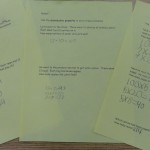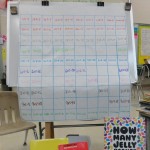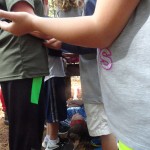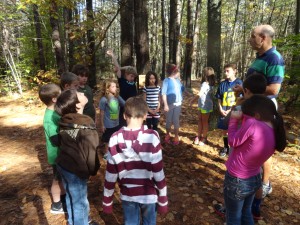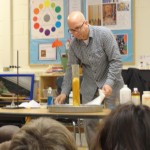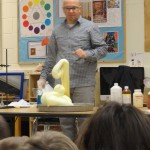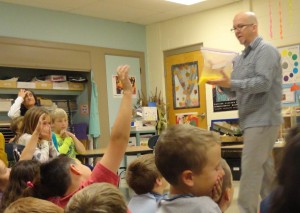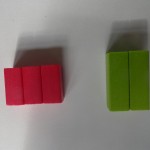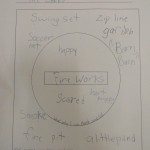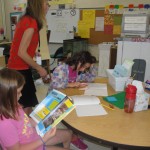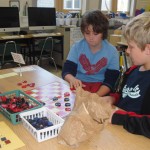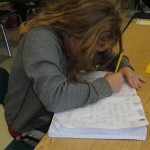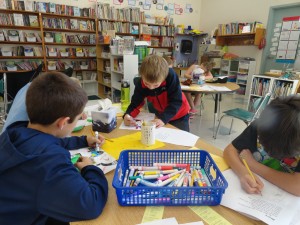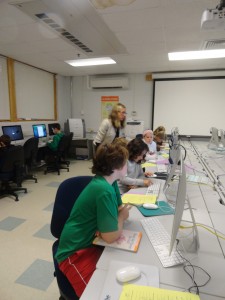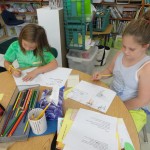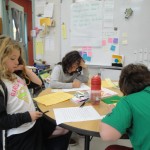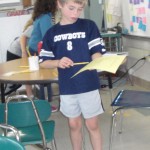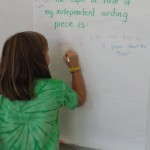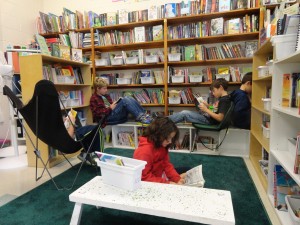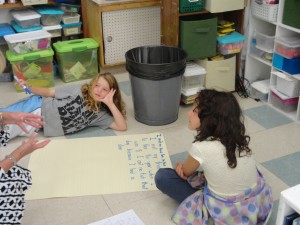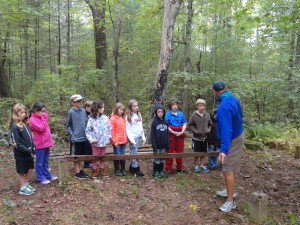Happy Halloween!
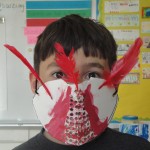
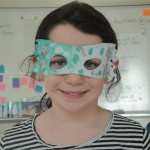 It has been a week full of excitement and waiting – apple picking, haunted hayrides, pumpkin carving, costume planning and finally trick-or-treating. In and around all that excitement at home, we have explored strong verbs in writing and begun our second narrative piece of writing based on the map where we play. Most of the children posted writing and art on their blogs. We’ve been multiplying with larger amounts and we’ve been learning about trees. There’s lot going on in 3E.
It has been a week full of excitement and waiting – apple picking, haunted hayrides, pumpkin carving, costume planning and finally trick-or-treating. In and around all that excitement at home, we have explored strong verbs in writing and begun our second narrative piece of writing based on the map where we play. Most of the children posted writing and art on their blogs. We’ve been multiplying with larger amounts and we’ve been learning about trees. There’s lot going on in 3E.
Multiplying and the Distributive Property
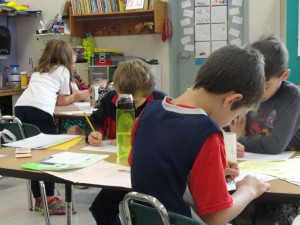 The children have been working to solve their problems with efficiency and accuracy. We’ve been working to organize our problem solving steps and follow a natural sequence working from the problem through to the solution. The children are doing a great job with this.
The children have been working to solve their problems with efficiency and accuracy. We’ve been working to organize our problem solving steps and follow a natural sequence working from the problem through to the solution. The children are doing a great job with this.
I wish I had saved some of the problems the children did from the beginning of the year to show them how far they have come. In September they were drawing out each set and writing a repeated addition sentence to solve problems like this:
Ginger got a book full of sticker mustaches. There were eight pages in the book.
Each page had five stickers on it.
How many sticker moustaches were in the book at the start?
This week the children have been confidently using the distributive property to break amounts apart to solve for partial products that they then add together. Here’s a sample of a problem from this week:
Timmy read for 23 minutes a day for 5 days. How many minutes did he read altogether?
Over the weekend he read for 45 minutes each day. How many minutes did he read over the weekend? How many minutes did he read altogether in the week?
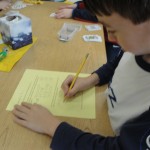
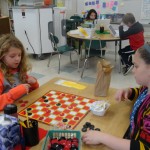 We have begun to explore time and measurement. Through our work with time we will continue to develop our understanding of multiplication and division of 5’s and 6’s. We are going to be focusing on metric measurements so that we can continue working with tens and begin to deepen understanding of place value through the thousands. The class deserves to feel proud of their effort and continued perseverance with problems that challenge their thinking and logic.
We have begun to explore time and measurement. Through our work with time we will continue to develop our understanding of multiplication and division of 5’s and 6’s. We are going to be focusing on metric measurements so that we can continue working with tens and begin to deepen understanding of place value through the thousands. The class deserves to feel proud of their effort and continued perseverance with problems that challenge their thinking and logic.
The Importance of Trees
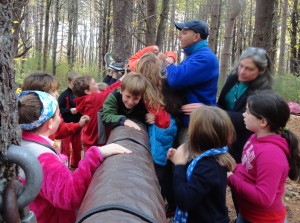 A scientist who focuses on the study of trees and woody-stemmed plants is called a Dendrologist. As a class we are learning about trees. Together we are using our tree study to model the parts of the “Who Am I?” project begun this week. This week we read three picture book biographies of people who changed the world with trees. We learned that beyond cleaning the air of carbon dioxide, trees are important for holding earth in place, and for allowing ground water to reach the surface for use. We learned that trees are an important part of creating and maintaining a healthy environment. We read about Wangari Maathai planting trees in Kenya, about Katherine Sessions transforming San Diego at the turn of the 20th century when women didn’t do that and we read about how Dr. Sato planted mangrove trees and saved families because of the changes the trees brought to Eritrea. We are learning about all different types of trees, their life cycles and how central they are in many different habitats.
A scientist who focuses on the study of trees and woody-stemmed plants is called a Dendrologist. As a class we are learning about trees. Together we are using our tree study to model the parts of the “Who Am I?” project begun this week. This week we read three picture book biographies of people who changed the world with trees. We learned that beyond cleaning the air of carbon dioxide, trees are important for holding earth in place, and for allowing ground water to reach the surface for use. We learned that trees are an important part of creating and maintaining a healthy environment. We read about Wangari Maathai planting trees in Kenya, about Katherine Sessions transforming San Diego at the turn of the 20th century when women didn’t do that and we read about how Dr. Sato planted mangrove trees and saved families because of the changes the trees brought to Eritrea. We are learning about all different types of trees, their life cycles and how central they are in many different habitats.
S.E.L. – Learning with Leo Lionni
This week we’ve been reading books by Leo Lionni to discover what lessons they offer us as we work together to create a classroom community where everyone can be him or herself while allowing everyone the opportunity to learn. We’ve been thinking about and talking about what it means to be trustworthy, responsible, respectful, fair, caring, kind and contributing “citizens” of our classroom, school and town. Reading Frederick, Matthew’s Dream, Tico’s Golden Wings, Cornelius and Swimmy helped us stop and think about being different, being included and accepted and being kind. We’ve begun to take time to notice the ripple effect of one small action. We’ve also begun to realize that everyone doesn’t understand things in the same way. What one person (or alligator in Cornelius’ case) sees as bragging could actually be pride and excitement over a worked for accomplishment.
Here are a few of the lessons we’ve learned so far: Follow your dreams, it’s okay to be the same and it’s okay to be different as long as you are kind, it takes time, effort and practice to learn new things, everyone has a part.
We’ll keep reading books by Leo Lionni next week as well and we’ll continue our important work of learning more about ourselves individually and as members of a community. Ask your child which of the books we read this week made them stop and think most of how we work together, judge behavior and try to understand others with kindness. That’s not easy.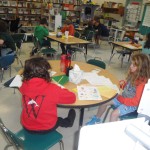

Bits and Pieces –
- We took another timed fact test for multiplication this week. Everyone improved his or her score. Thank you for you continued support with fact work at home.
- We began cursive with the “clock climber” set of letters. We are focusing on letter formation so that all the letters will easily connect together when we move on to words.
- Our next outdoor challenge has been moved to Monday, November 10.
- We are going to the SEE Science Center in Manchester on Tuesday, November 18 as the culminating event of our “Who Am I?” scientist project. More details and the permission slip for this field trip will follow.


